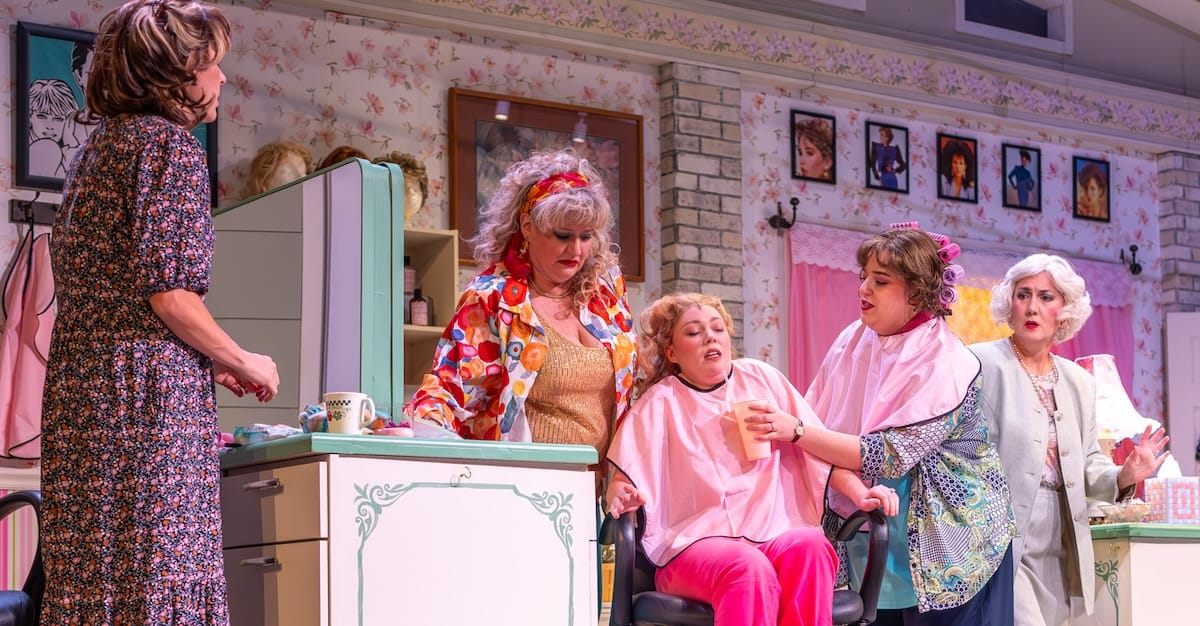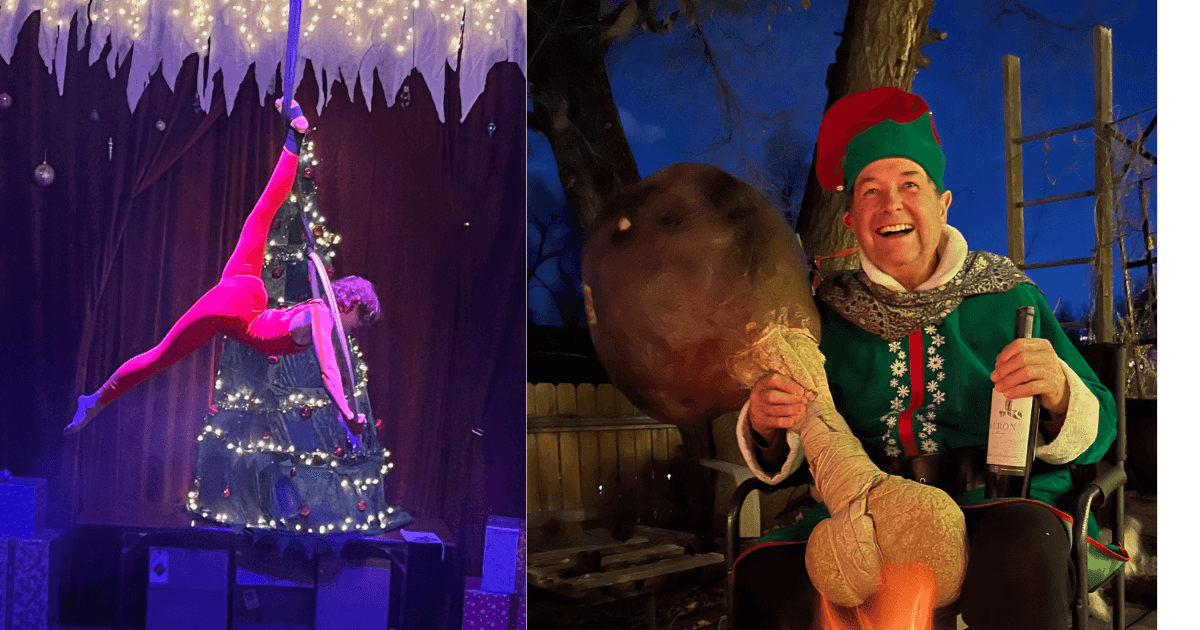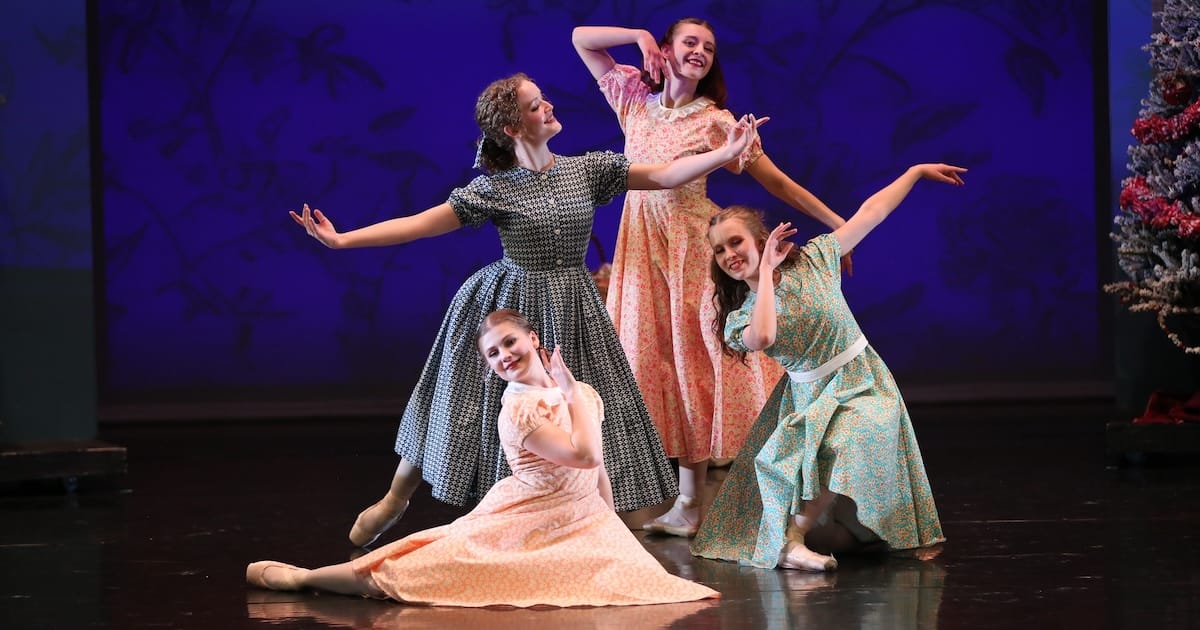Candlelight Dinner Theatre in Johnstown opens its 18th season with Robert Harling’s play, with performances that shine despite staging that detracts from the play’s realism.
Candlelight Dinner Theatre has built its reputation on lavish productions of Broadway musicals, so opening its 18th season with Steel Magnolias is a notable departure. Robert Harling’s 1987 play is a naturalistic domestic dramedy, confined to the small-town salon of Truvy Jones, where six Louisiana women share gossip, laughter and heartbreak.
Without songs or spectacle, the success of this production rests squarely on the strength of its performers and the subtlety of its direction. Under director Shelly Gaza’s guidance, however, Candlelight’s Steel Magnolias sometimes feels at odds with the material.
The play’s power comes from its realism, but Gaza leans toward theatrical flourishes, including elongated transitions, stylized blocking and theatrical lighting effects that break the illusion of intimacy. For an audience accustomed to big musical numbers, this may be a way to fill the space, but it undercuts the very qualities that make Harling’s script so affecting.
Southern slice of life
At its core, Steel Magnolias is a story about chosen family. The action unfolds entirely in Truvy’s small beauty salon in Chinquapin, Louisiana, over the span of several years in the mid-1980s. Truvy (Jalyn Courtenay Webb) presides over the shop, offering not just hair care but a space where the women of the town can share their triumphs and sorrows.
The ensemble includes Annelle (Nicole Harwell), the shy newcomer with a mysterious past; Clairee (Melissa Williams), the wealthy widow with a sharp wit; and Ouiser (Abby Apple Boes), the prickly but ultimately tender-hearted curmudgeon. The play’s emotional core comes from the relationship between Shelby (Cate Rounds), a spirited young woman determined to live a full life despite the health risks posed by her diabetes, and her mother, M’Lynn (Vicki White), who struggles to balance fierce love for her daughter with the fear of losing her.
Across four scenes, we watch these six women gossip, bicker and support each other. Their laughter is abundant, but so is their resilience when tragedy strikes. It’s this blend of warmth and grief that has kept Harling’s play a staple of American theater for nearly four decades.
It’s a play that thrives on naturalism — the illusion that we’re eavesdropping on real conversations in a small-town salon. The more grounded and lived-in the staging, the greater the emotional payoff. This is where Candlelight’s production falls short, with some distracting, over-theatrical choices that undermine Steel Magnolias’ authenticity.
Anchoring performances
Despite the shaky direction, the cast’s performances help steady the production. The six women at the heart of the story bring conviction to their roles, with several standout performances that carry the show through its meandering moments.
Webb, familiar to Candlelight audiences both as a performer and the sales & marketing director, brings comfort and authority to Truvy, the salon’s matriarch. Her Truvy is both glamorous and maternal, particularly in the way she mentors Annelle, guiding the new member of the salon like a surrogate daughter while still delivering the play’s sassier punchlines.
Harwell plays Annelle with nervous energy, though her characterization sometimes veers into caricature. In early scenes, the jittery awkwardness works, but by the time Annelle’s religious fervor takes hold, the performance feels more gestural than fully inhabited.
The heart of the show lies with Shelby and M’Lynn, portrayed by Rounds and White. Rounds, originally from the South, slips naturally into the role, with a lilt that never sounds forced and a determined optimism that makes Shelby’s choices both admirable and tragic. She embodies the bright Southern Belle who insists on normalcy even when it costs her dearly.
Opposite her, White’s M’Lynn is the production’s standout performance: understated and devastatingly human. White charts the difficult journey from exasperation to grief with quiet precision, culminating in the play’s famous monologue she delivers when she returns to the salon after Shelby’s death. Though the staging pulls her unnaturally downstage for part of the speech, White’s delivery is so raw that she overcomes the added theatricality.
Williams delivers sly humor as Clairee, relishing her quips even if her accent wavers. Boes takes on Ouiser with gusto, capturing the character’s sharp tongue and eccentricity — though at times the performance tips into broadness, with reactions that feel staged rather than lived.
The salon as a stage
If the acting is strongest at its most restrained, the production’s design elements work best when serving the same goal: realism. Mike Curtis Grittner’s scenic design is richly detailed, a fully functional salon complete with hairdryers, coffee machine and a clutter of magazines. Seasonal adjustments mark the passage of time, subtly signaling shifts in the women’s lives without drawing focus.
Other technical elements are more uneven. Laurel Ladzinski’s lighting occasionally isolates characters, like Shelby and M’Lynn, in artificial spotlights, breaking the illusion of continuous action. Dark patches at the stage’s periphery further distracted when actors drifted into them.
By contrast, Ruby Duka’s sound design excels: the bark of neighborhood dogs, distant gunshots and radio-appropriate music cues build an aural world that feels specific and authentic.
In a play set in a hair salon, wigs had to be convincing, and Debbie Spaur delivers. With few exceptions, the hairpieces blend seamlessly and support each character’s identity. Deb Faber’s costumes are equally successful, from Truvy’s sequined ensembles to seasonal outfits that chart the characters’ personalities and growth.
Where Candlelight’s Steel Magnolias falters is in Gaza’s staging choices. The pacing is uneven from the very start: the show opens with an extended stretch of music and darkness before the first scene, and that sluggishness recurs in long transitions between scenes.
Once scenes do begin, they often resolve into the same visual tableau: the women clustered together on the couch, draining variety and making consecutive beats feel repetitive. In one particularly awkward exchange, Annelle and Ouiser circle the sofa in a manner that looks more like a director’s attempt at stage business than anything two people would do in a real argument.
These choices draw attention to the mechanics of staging rather than letting the characters’ relationships unfold naturally.
They also underscore a deeper tension between Candlelight’s house style and Harling’s play. As a dinner theatre accustomed to filling a large space with splashy musicals, the company gravitates toward big gestures, obvious blocking and visible theatricality.
But Steel Magnolias thrives on the opposite: restraint, realism, and the quiet rhythms of everyday life. Its greatest power lies in creating the illusion that we’re simply watching women talk in a salon, not actors performing on a stage. When the production strays from that naturalism, it undermines the very qualities that make the play timeless.
Laughter through tears
Still, the heart of Harling’s play persists. The ensemble generates genuine chemistry and the story’s blend of humor and heartbreak clearly resonated. Candlelight’s patrons laughed heartily at the women’s gossip and sighed audibly during moments of loss — a reminder that even when staging choices distract, the emotional engine of Steel Magnolias remains strong.
Compared with more intimate stagings, like Theatre SilCo’s devastatingly naturalistic production earlier this year, Candlelight’s version feels broader, more presentational and occasionally clunky. Yet for audiences in Johnstown, the production offers a chance to see a classic American play on a scale rarely attempted.
Candlelight’s production doesn’t always honor Harling’s delicate realism, but when the performances break through the excess, they reaffirm why Steel Magnolias endures: It is a story of women whose resilience and love for one another represents a timeless story of human caring.
A Colorado-based arts reporter originally from Mineola, Texas, who writes about the changing world of theater and culture, with a focus on the financial realities of art production, emerging forms and arts leadership. He’s the Managing Editor of Bucket List Community Cafe, a contributor to Denver Westword and Estes Valley Voice, resident storyteller for the Bonfils-Stanton Foundation and co-host of the OnStage Colorado Podcast. He holds an MBA and an MA in Theatre & Performance Studies from CU Boulder, and his reporting and reviews combine business and artistic expertise.






Leave A Comment